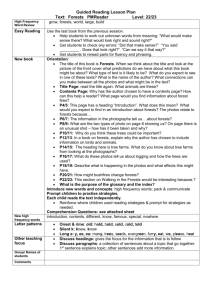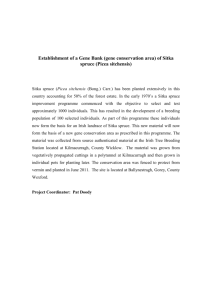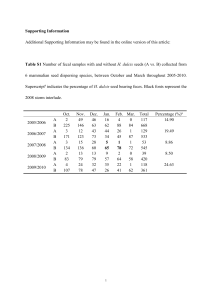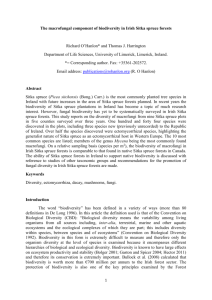Study Questions for Nature, Natural History & Ecological Science
advertisement
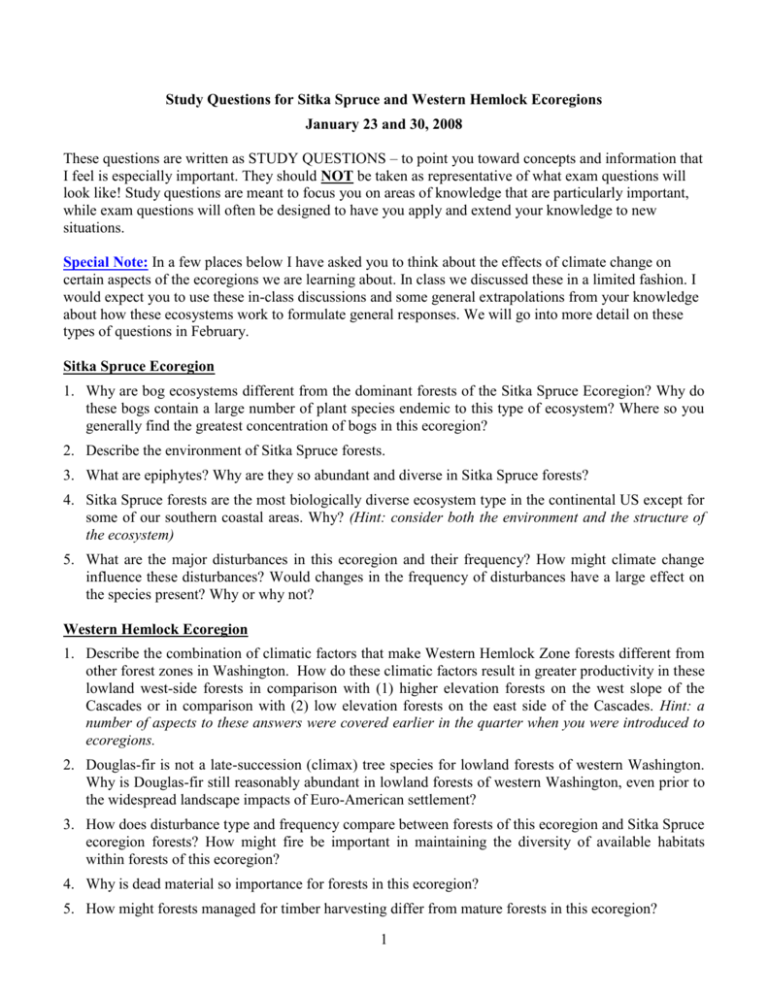
Study Questions for Sitka Spruce and Western Hemlock Ecoregions January 23 and 30, 2008 These questions are written as STUDY QUESTIONS – to point you toward concepts and information that I feel is especially important. They should NOT be taken as representative of what exam questions will look like! Study questions are meant to focus you on areas of knowledge that are particularly important, while exam questions will often be designed to have you apply and extend your knowledge to new situations. Special Note: In a few places below I have asked you to think about the effects of climate change on certain aspects of the ecoregions we are learning about. In class we discussed these in a limited fashion. I would expect you to use these in-class discussions and some general extrapolations from your knowledge about how these ecosystems work to formulate general responses. We will go into more detail on these types of questions in February. Sitka Spruce Ecoregion 1. Why are bog ecosystems different from the dominant forests of the Sitka Spruce Ecoregion? Why do these bogs contain a large number of plant species endemic to this type of ecosystem? Where so you generally find the greatest concentration of bogs in this ecoregion? 2. Describe the environment of Sitka Spruce forests. 3. What are epiphytes? Why are they so abundant and diverse in Sitka Spruce forests? 4. Sitka Spruce forests are the most biologically diverse ecosystem type in the continental US except for some of our southern coastal areas. Why? (Hint: consider both the environment and the structure of the ecosystem) 5. What are the major disturbances in this ecoregion and their frequency? How might climate change influence these disturbances? Would changes in the frequency of disturbances have a large effect on the species present? Why or why not? Western Hemlock Ecoregion 1. Describe the combination of climatic factors that make Western Hemlock Zone forests different from other forest zones in Washington. How do these climatic factors result in greater productivity in these lowland west-side forests in comparison with (1) higher elevation forests on the west slope of the Cascades or in comparison with (2) low elevation forests on the east side of the Cascades. Hint: a number of aspects to these answers were covered earlier in the quarter when you were introduced to ecoregions. 2. Douglas-fir is not a late-succession (climax) tree species for lowland forests of western Washington. Why is Douglas-fir still reasonably abundant in lowland forests of western Washington, even prior to the widespread landscape impacts of Euro-American settlement? 3. How does disturbance type and frequency compare between forests of this ecoregion and Sitka Spruce ecoregion forests? How might fire be important in maintaining the diversity of available habitats within forests of this ecoregion? 4. Why is dead material so importance for forests in this ecoregion? 5. How might forests managed for timber harvesting differ from mature forests in this ecoregion? 1 6. Where don’t forests occur in lowland western Washington? Why? Describe some of the general principles that determine why forests don’t occur in those sites. What are some of the major threats to the conservation of these non-forested ecosystems? 7. Describe four major types of freshwater wetlands. Why are there a number of species that are restricted to live in wetlands? 8. Why are wetland ecosystems so productive? How might a warmer climate influence this productivity? 9. Describe the general life cycle of salmon. How might a change in climate that results in warmer air temperatures and less winter snow influence salmon populations? What could that mean for forests of this ecoregion? 2

